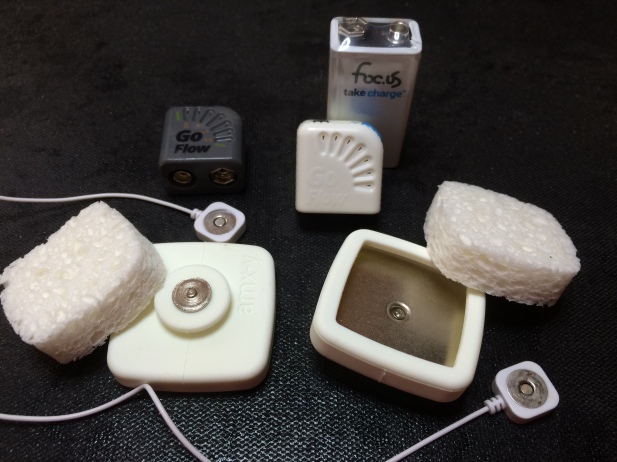I had the pleasure of discussing tDCS with article-author Amy Dockser Marcus. She’s put together a very clear picture of where we’re at with DIY tDCS at the moment. I agree that Brent Williams is a great example of someone in the DIY community lighting the way towards safe and ethical home-use of tDCS.
I draw attention to this section of the article because it will be of special interest to regular readers. I find it very interesting to note that this letter addressed to “members of the DIY tDCS community” from concerned researchers happens to be under review for publication a few weeks prior to the FDA Workshop that will address the use of “non-invasive brain stimulation medical devices” (emphasis mine). Unless representatives from the likes of Focus, Thync or Halo Neuroscience show up to represent their devices, I think it very unlikely that the ‘DIY’ community will be represented (though Thync is certainly positioned apart from the DIY community there are obvious overlaps in interest). I signed up for the webcast. Assuming the webcast software actually works, I hope to observe a reasonable discussion between intelligent persons that finds nothing of note to be alarmed about.
Still, Dr. Hamilton believes some home users may not fully recognize that professional research in the field is largely done in people with brains “whose network has been altered and whose functions have been disturbed by or changed by injury.” Promising data gathered about neurostimulation on someone who has had a stroke, for instance, doesn’t necessarily apply to someone with “a normal intact system,” he says.
Researchers also haven’t studied possible long-term impacts of repeated use of tDCS by healthy people. There is some preliminary research raising potential concerns that when neurostimulation improves one brain function, there can be losses in other areas. Assessing the risks and benefits of the technology may differ depending on whether someone is healthy or ill.
Dr. Hamilton is one of a group of scientists and clinicians working with tDCS for medical applications who have written a letter aimed at members of the DIY tDCS community that raises some of their concerns. The letter is under review for publication by an academic journal.
I would only add that while Dr. Hamilton’s work with tDCS for the most part centers around aphasia (stroke) and pain, my sense of tDCS studies coming out of the science community is that it’s trending towards research with healthy individuals.
Source (in case you missed it above): The Weird World of Brain Hacking






